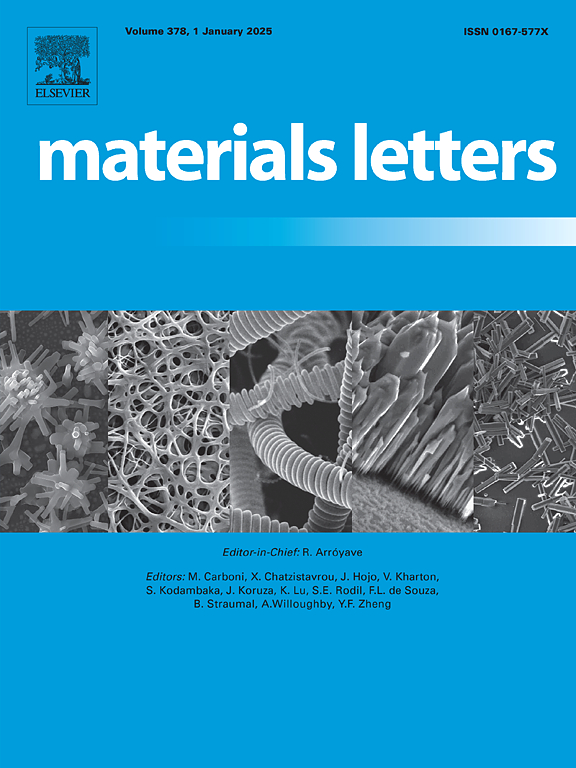Effect of temperature on the growth of Cupric and Cuprous Nanoparticles in a wet chemical synthesis
IF 2.7
4区 材料科学
Q3 MATERIALS SCIENCE, MULTIDISCIPLINARY
引用次数: 0
Abstract
Cuprous oxide (Cu2O) and cupric oxide (CuO) particles were synthesized using a wet chemical surfactant free method at different synthesis temperatures from 25 °C to 60 °C. Morphology, size, and chemical composition of the prepared Cu2O particles were analyzed by FESEM, PXRD, and UV-vis. We discovered that the chemical composition of the Cu2O particles remained unaffected by the synthesis temperature. However, morphology and size of the particles showed a strong temperature dependency. This could be attributed to the temperature induced formation of CuO species from the copper hydroxide (Cu(OH)2) precursor which also functions as copper precursor for the Cu2O particle growth. The cupric oxide species was determined to be the main cause for the formation of micrometer sized particles, whereas with the Cu(OH)2 precursor species for the Cu2O particles nanocubes with smaller edge lengths as well as octahedrons were obtained.
湿法合成中温度对铜和纳米铜生长的影响
在25 ~ 60℃的不同合成温度下,采用无化学表面活性剂的湿法合成了氧化亚铜(Cu2O)和氧化铜(CuO)颗粒。采用FESEM、PXRD和UV-vis分析了制备的Cu2O颗粒的形貌、大小和化学成分。我们发现,Cu2O颗粒的化学成分不受合成温度的影响。然而,颗粒的形态和大小表现出强烈的温度依赖性。这可能是由于氢氧化铜(Cu(OH)2)前驱体在温度诱导下形成CuO,而Cu(OH)2也作为Cu2O颗粒生长的铜前驱体。氧化铜是形成微米级颗粒的主要原因,而Cu(OH)2是形成Cu2O颗粒的前驱体,可以得到边长较小的纳米立方体和八面体。
本文章由计算机程序翻译,如有差异,请以英文原文为准。
求助全文
约1分钟内获得全文
求助全文
来源期刊

Materials Letters
工程技术-材料科学:综合
CiteScore
5.60
自引率
3.30%
发文量
1948
审稿时长
50 days
期刊介绍:
Materials Letters has an open access mirror journal Materials Letters: X, sharing the same aims and scope, editorial team, submission system and rigorous peer review.
Materials Letters is dedicated to publishing novel, cutting edge reports of broad interest to the materials community. The journal provides a forum for materials scientists and engineers, physicists, and chemists to rapidly communicate on the most important topics in the field of materials.
Contributions include, but are not limited to, a variety of topics such as:
• Materials - Metals and alloys, amorphous solids, ceramics, composites, polymers, semiconductors
• Applications - Structural, opto-electronic, magnetic, medical, MEMS, sensors, smart
• Characterization - Analytical, microscopy, scanning probes, nanoscopic, optical, electrical, magnetic, acoustic, spectroscopic, diffraction
• Novel Materials - Micro and nanostructures (nanowires, nanotubes, nanoparticles), nanocomposites, thin films, superlattices, quantum dots.
• Processing - Crystal growth, thin film processing, sol-gel processing, mechanical processing, assembly, nanocrystalline processing.
• Properties - Mechanical, magnetic, optical, electrical, ferroelectric, thermal, interfacial, transport, thermodynamic
• Synthesis - Quenching, solid state, solidification, solution synthesis, vapor deposition, high pressure, explosive
 求助内容:
求助内容: 应助结果提醒方式:
应助结果提醒方式:


